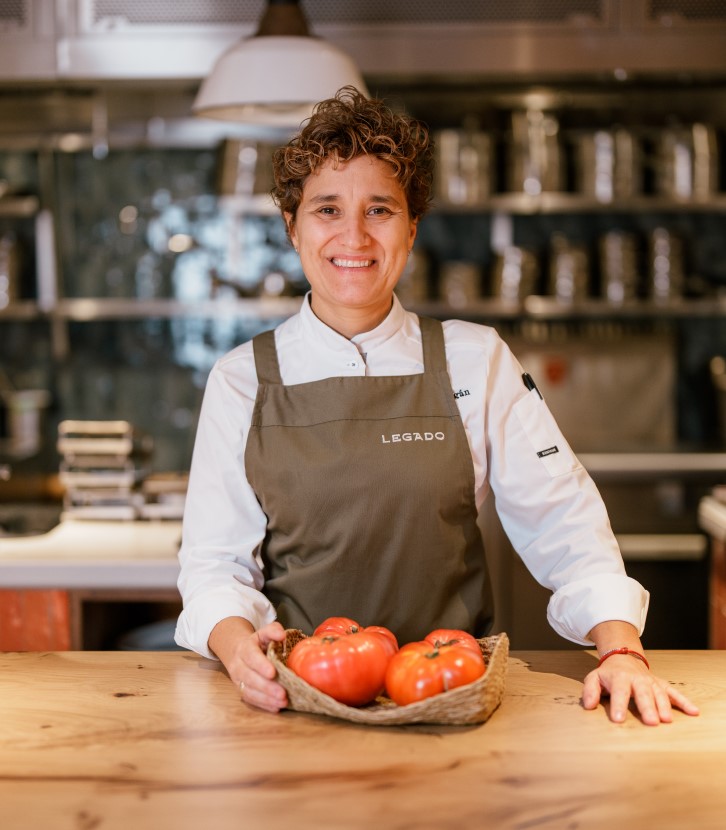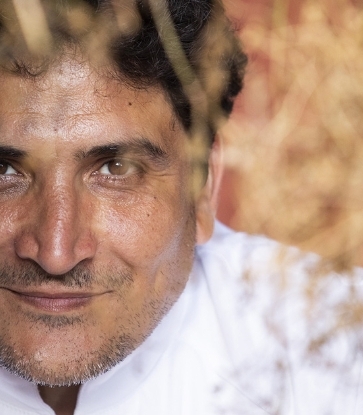Long associated with conflict and agriculture, Vietnam’s international image is transforming into one of innovation and flair. This is particularly true in Hanoi and Ho Chi Minh City which, in recent years, have drawn attention for their art and design scenes.
The launch of the first MICHELIN Guide demonstrates that this refreshed image is also present in the country’s restaurant scene. And while food is central to a great meal, so is the overall dining experience shaped by those who are behind the scenes.
“MICHELIN Guide is a big step for Vietnam,” says Sam Tran, co-founder and head chef at one MICHELIN Star restaurant Gia, MICHELIN Guide Hanoi and Ho Chi Minh City 2023. “Before that, most people only knew about Vietnamese food through phở and bánh mì. Now that [Vietnam is] getting more recognised, it opens the gate for everyone in the industry.”

Storied beginnings
Born in 1990 when Vietnam was on the cusp of opening to the world, Tran moved to Melbourne at 22 with her partner to study hospitality. Struggling to make ends meet, Tran quit school and worked in a café, allowing her partner to continue studying full-time. Cooking turned out to be her calling and Tran spent seven years working in kitchens, first in the café and then in restaurants.
Tran returned to Vietnam in 2019 for a short visit and the COVID-19 pandemic struck. Going back to Australia was out of the question, so Tran planned to open a café in Hanoi. After some back and forth with her business partner Long Tran, now Gia’s operations manager, this idea evolved into a fine dining restaurant. Gia had its soft opening in October 2020 and the grand opening at the end of the year. Three short years later, in 2023, Tran won Vietnam’s first MICHELIN Guide Young Chef Award.
Tailored experiences
Tran wasn’t interested in replicating what she’d come across abroad. Instead, she decided to craft a fine dining experience that was Vietnamese at its core – just like her cooking. “My food is Vietnamese,” says Tran, “but with a modern approach.” But beyond the cuisine, how can a restaurant craft a premium, contemporary, and international experience while remaining true to its traditional roots?

For Tran, it’s all about the atmosphere. “The interior design creates the feeling for customers when they come in,” she says. “In our case, it means they immediately know about our concept… you see all of the design elements, and you know that this is Vietnam.”
Gia (from the Vietnamese gia đình, meaning “family”) sits in a centenarian house that overlooks the Temple of Literature. Built in 1070, the temple is Vietnam’s oldest university, famed for its animal sculptures and elaborate rooftop architecture – and this has impacted on the restaurant.
Tran and her team worked with a specialist in heritage architecture to bring out the building’s traditional features, like the original lightwell, banisters, and beams. But they also worked to bring in design elements from the Temple of Literature, such as the crimson light feature on the upper floor – inspired by the rooftops – and the small stone dog at the bottom of the stairs – a nod to the turtles symbolising wisdom and longevity. “We ask customers to pat the dog to get some luck,” laughs Tran.

The journey is the reward
Patting the dog is just one part of the journey. Gia has only one menu which changes every season, and just as the dishes are overhauled every three months, so is the way guests move through the restaurant. One menu may include a pre-drink in the downstairs lounge, the main meal in the upstairs dining room, an after-dinner snack in the kitchen, and then back to the lounge for dessert.
Bringing guests into the kitchen is a crucial part of the journey, believes Tran. In most restaurants, serving staff are the conduit between guests and chefs, but at Gia, there is always direct communication between them at some point during the meal. “Sometimes guests will visit the kitchen for the opening bites of the menu, sometimes they will visit later before going to the lounge for dessert.” To enhance this experience, she chose sintered stone for her kitchen, valuing its durability, hygiene, and striking aesthetics. This material reflects her commitment to cleanliness and creates a visually appealing space. Tran's decision goes beyond functionality, encapsulating her philosophy of hospitality, and transforming Gia's kitchen into a stage for a shared culinary adventure.
Gia also plays with light. “Some people complain that the restaurant is quite dark,” says Tran, “but that’s actually our intention. The light shines on where we want to have the customers’ full attention.” In the upstairs restaurant, for example, light focuses on the table so that people can see their food and the faces of their fellow diners, but the “darkness around creates a sense of privacy.”
Spotlighting the table showcases not only the cuisine but also how it’s served, which is important when crafting a special restaurant experience in Vietnam, believes Tran. “It’s like how we wear clothes,” she says. “Tableware supports our ideas and delivers our message.”

Vietnam artisanship refreshed
Tran has made special efforts to incorporate traditional tableware into her modern cuisine. This includes deep bowls that are narrow at the bottom but open at the top. This helps to keep the food warm, but it also releases flavour. Local craftspeople were commissioned for tableware like wooden plates, chopsticks, and cutlery holders to bolster Vietnam’s centuries-old craft culture. “It’s so important to support these crafts,” says Tran. “It’s our neighbourhood, our home. When people around you are happy, you can be happy, too. And it means we can grow together.”
Vietnam is undergoing a modernisation of its craft industries, demonstrated by restaurants like Gia and brands like Vasta Stone, a proudly Vietnamese sintered stone brand that harnesses traditional artisanry, state-of-the-art manufacturing and innovative design to create environments that are welcoming, contemporary, and grounded in heritage.
Like Gia, Vasta Stone understands that comfort is paramount when embracing new ideas for the future. “When people are comfortable and relaxed,” says Tran, “they are more open to new things.”
About Vasta Stone
Vasta Stone understands the important role kitchens play in crafting the dining experience, which is why their sintered stone worktops are designed to be visually outstanding, durable, anti-scratch, and easy to clean. Vasta Stone, an official partner of the MICHELIN Guide Vietnam, is Vietnam's leading luxury sintered stone brand, distinguished by its commitment to innovation, sustainability, and excellence. With skilled artisans and state-of-the-art manufacturing, Vasta Stone exemplifies Vietnam's renowned craftsmanship. Their products, featuring exquisite Italian design, seamlessly combine contemporary trends with traditional techniques. Vasta Stone offers a versatile, customisable range suitable for luxurious bathrooms, modern kitchens, and outdoor spaces. They prioritise eco-friendliness and compete in the high-end luxury market. Vasta Stone's core message emphasises quality, sustainability, and environmental responsibility, establishing them as the preferred choice for top-tier sintered stone products – proudly made in Vietnam.
Illustration image: © Linh Pham/ MICHELIN Guide Vietnam





















